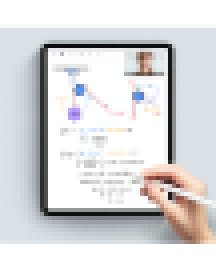After the pandemic, the nationwide adoption of high-dose online tutoring was expected to address deepening educational disparities. Additionally, it attracted attention for its ability to provide high-quality education in regions with an inadequate supply of teachers, especially in higher-level STEM education.
However, as of 2023, the effectiveness of high-dose tutoring has gradually declined due to low student participation rates and skepticism from educational authorities regarding the actual educational impact of online high-dose tutoring. . Some school districts have opted for high-dose in-person tutoring. So is the low effectiveness of high-dose tutoring simply due to its online nature?
To answer this question, it is essential to examine the conditions that enable online classes and explore how edtech technology can help address educational disparities and teacher shortages in our education system.
Currently, most high-dose online educational services do not provide students with the same quality of lessons as in-person classes. To effectively carry out high-dose education, teachers not only need to explain and repeat, but also find novel ways to help students understand difficult concepts, including encouraging students to take a central role, solving various examples themselves. themselves and explain their understanding to the instructor to be educationally effective. Especially for low-performing students, diagnosing what they don’t know through various questions is crucial, since students themselves often don’t know where they need to improve.
However, attempting to accomplish such “high-level communication” with only flat video or displaying pre-designed lesson slides via screen sharing can deter student engagement and make it difficult to achieve lesson objectives. So what additional elements are needed to achieve frequent problem-solving communication in online education?
Throughout history, humans have used various media such as stones, wood, paper and blackboards to explain and learn abstract concepts and complex knowledge. Whiteboards are often used by teachers to describe concepts, but they can also serve as a means for students to approach and try to solve problems to ensure understanding. In individual tutorials, blank notes between teacher and student serve as a substitute for blackboards. Even students who do not ask questions because they do not know what they do not know can be encouraged to explain what they have just learned to the teacher or their classmates or to try to solve problems, revealing their true abilities to the teacher. In this way, teachers can help students achieve lesson objectives by providing more diverse examples and problem solving.
During the recent pandemic, teachers, students, and parents did not embrace high-dose online tutoring for several reasons. Teachers had to rely on their voices to capture students’ attention and adapt to unfamiliar remote teaching methods to motivate students who only appeared on video. However, despite teachers’ efforts, students remained passive participants and were unable to actively participate in lessons as they would in a physical classroom. Observing these unengaged students, parents began to think that offline classes would be more effective.
That is, to achieve online education of the same quality as offline, the whiteboard function, which serves as a substitute for whiteboards, is not optional but essential. This whiteboard shouldn’t be a rudimentary feature where you can only draw rough lines and underlines with your mouse. It should provide a writing experience similar to using a pen on paper or writing graphs and equations with chalk, capturing the feeling of taking notes offline. Only then can online education achieve the same quality as offline education.
You might think that popular video conferencing solutions already have a whiteboard feature. However, the standard whiteboard feature is geared more toward assisting in business meetings than the feel of a classroom whiteboard. There are obvious differences between educational and business whiteboards.

According to operational data from paging call, which provides whiteboard functions to educational companies, teachers and students enter about 20,000 strokes of communication data in an average 60-minute online class. Unlike business whiteboards, which draw simple underlines and circles on presentation materials, educational whiteboards must synchronize a large amount of rapidly generated input data between participants in real time and represent it graphically. Furthermore, implementing such real-time communication and graphical rendering functions on tablets, which have lower hardware capabilities than PCs and suffer from battery drain and heating issues when performance is pushed to the limit, presents a considerable technical challenge. However, only when teachers and students can communicate with each other efficiently in this way, similar to offline teaching, will they feel that the quality of online education has improved.
Recently, in South Korea, one of the most competitive countries in the world in educational services, the ADDRESS The service has grown significantly. It lacks video features and relies solely on audio and whiteboards for communication between teachers and students. Still, it has attracted thousands of users across the country and continues to grow. Seoltab has grown as an online education service loved by students and teachers because they have tablets with pen input, allowing them to communicate effectively in a non-face-to-face environment, much like explaining on a practice sheet as if they were meeting. in person.
Some school districts that are disappointed with high doses of online tutoring are trying to return to offline methods. As it becomes more difficult to find teachers who can adequately cover the subjects and study hours that students require, the disadvantages of online learning will slowly diminish, leading to a shift in focus towards online education. This transition will be accelerated by advances in artificial intelligence technology, the widespread adoption of digital textbooks, and the emergence of vertically integrated super apps for educational technology solutions. However, the starting point of this change will be the digital transformation of the blackboard, which has been a central element in the educational field for thousands of years.
 NEWSLETTER
NEWSLETTER





